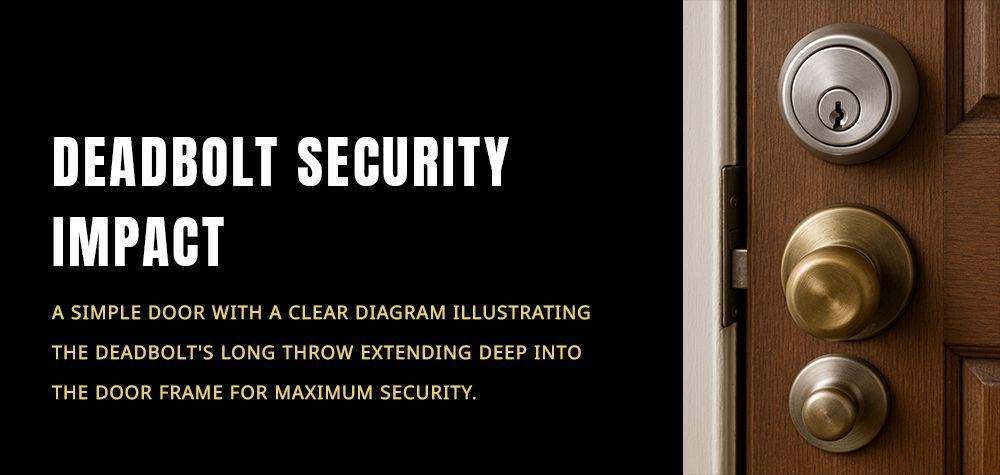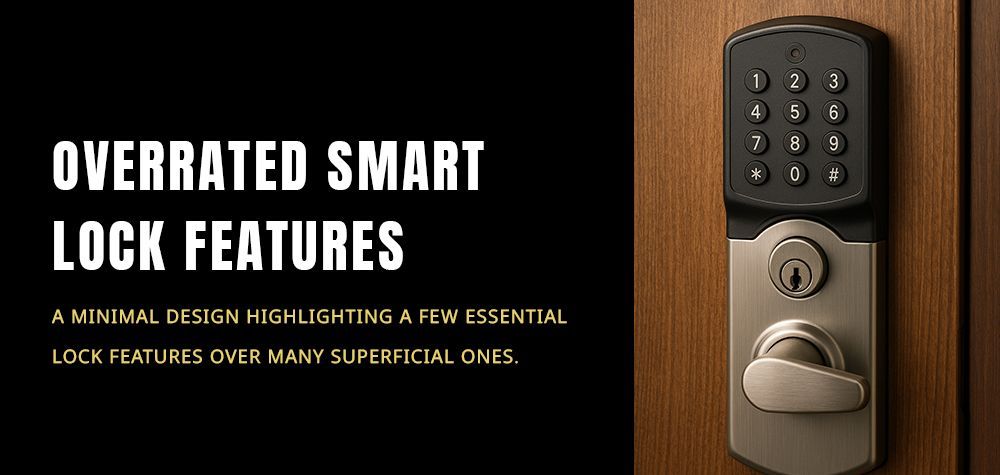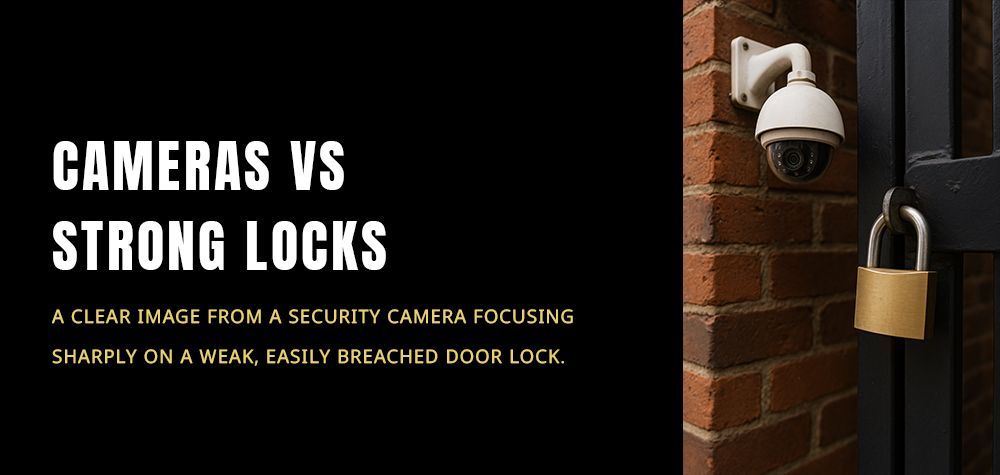How to Troubleshoot Central Locking System Failures?
Your car's central locking system is one of those modern conveniences you barely think about—until it stops working. Whether it's a single door that refuses to lock, all doors remaining stuck, or your remote suddenly going silent, central locking failures can be frustrating, inconvenient, and even leave your car vulnerable to theft.
In this guide, we’ll break down everything you need to know about diagnosing and fixing central locking issues, from common symptoms and causes to actionable troubleshooting steps you can take—before heading to a professional.
Car Door Lock Freezes in Winter? Here’s What to Do
Understanding How the Central Locking System Works
Before diving into the problems, it's helpful to understand the basics of how central locking functions. A central locking system allows the driver to lock or unlock all doors simultaneously using a key fob, door switch, or by turning the key in one lock.
Most modern systems rely on electronic actuators inside each door, controlled by signals sent from the car’s Body Control Module (BCM) or central computer. These signals travel via wiring and fuses, and the whole system often relies on wireless inputs from a key fob or smartphone app.
In short, a central locking failure can be caused by electrical faults, mechanical problems, damaged components, or even software glitches.
Common Symptoms of Central Locking Failure
The first step in troubleshooting is to identify the nature of the issue. Some of the most frequent signs that your central locking system is malfunctioning include:
- One or more doors won’t lock or unlock
- All doors fail to respond to remote or switch input
- Clicking noises when pressing the key fob, but no movement
- Central locking works manually but not via remote
- Interior door switches don’t operate the locks
- Intermittent functionality—works one day, fails the next
Pinpointing which of these applies to your vehicle helps narrow down the potential cause.
Step 1: Check the Car Battery and Remote Battery
One of the most overlooked causes of central locking failure is a weak car battery or a dead key fob battery. If your battery voltage drops below a certain threshold, the system may lack the power needed to operate the actuators.
Start by checking:
- Does the car crank or start easily? If not, the main battery might be the issue.
- Try locking and unlocking from inside the car—if it works, your key fob battery is likely dead.
- If the remote doesn’t light up or trigger anything, replace its battery.
A simple battery swap can sometimes restore full central locking functionality.
How to Tell If Your Car Key Chip Is Damaged
Step 2: Listen for Sounds When Pressing the Lock Button
Press your key fob or door switch and listen closely. If you hear a clicking or buzzing sound coming from the door panels, it means the system is sending power, but something is mechanically jammed—usually the door lock actuator.
If you hear absolutely nothing, the signal may not be reaching the actuator, which could indicate an electrical issue such as a blown fuse, broken wire, or a failed control module.
Step 3: Inspect the Fuses and Relays
Central locking systems rely on one or more fuses and relays located in your vehicle's fuse box—usually under the dashboard or in the engine compartment. A blown fuse or faulty relay can instantly disable the entire system.
Refer to your owner’s manual to locate the correct fuse for the central locking system. Remove the fuse and inspect it. If it’s burned or broken, replace it with one of the same amperage. Also, test the associated relay by swapping it with a similar one from the fuse box if available.
If the system starts working again after this, you’ve found your culprit.
Step 4: Check Door Lock Actuators
The door lock actuator is a small motor that physically moves the locking mechanism. Over time, actuators can wear out, burn out, or get stuck due to internal failure or debris buildup.
If only one door is affected while others function normally, the actuator in that specific door is likely bad.
Testing the actuator involves removing the door panel, inspecting the wiring harness, and applying power directly to the actuator with a 12V battery or test light to see if it moves.
If it doesn’t respond, it’s time to replace the actuator.
Step 5: Examine the Wiring Inside the Door
The wires running from the car body to the doors pass through a flexible rubber boot near the door hinges. This area is prone to wear and tear, especially in older vehicles. Repeated door opening and closing can fray or snap these wires, cutting off power to the actuator.
Carefully peel back the rubber boot and inspect for:
- Broken, pinched, or frayed wires
- Loose connectors
- Signs of water damage or corrosion
Repair or replace any damaged wiring as needed. This step often resolves issues where just one door doesn’t respond.
Step 6: Test the Door Lock Switches and Control Module
If none of the locks respond when using interior door buttons or the key fob, the problem could lie in the switch itself or the central locking control module. Faulty switches may not send the correct signal, and control modules can suffer software bugs or hardware failure.
Use a multimeter to test whether the switch is sending voltage when pressed. If the switch is functioning properly, scan the car using an OBD2 diagnostic tool to check for BCM-related errors.
For newer vehicles, reprogramming or replacing the BCM may require dealer-level tools or a professional locksmith with specialized equipment.
Top 5 Reasons Your Remote Key Fob Isn’t Working Properly
Step 7: Check for Key Fob or Programming Issues
If your system works manually but not via remote, your key fob might need reprogramming. Fobs can lose synchronization with the vehicle after battery replacement, interference, or software reset.
Some older cars allow DIY programming using ignition and door sequences—check your vehicle manual or search your car model online. If not, a professional locksmith or dealer can reprogram or replace your key fob.
In rare cases, your fob could be physically damaged and may need to be replaced entirely.
Prevention: How to Avoid Central Locking Failures in the Future
Central locking systems are low-maintenance but still benefit from occasional attention. Here’s how to avoid headaches down the road:
- Keep your car battery in good condition
- Replace key fob batteries annually
- Use a dry lubricant on lock mechanisms during winter
- Avoid slamming doors or yanking door handles
- Clean around rubber boots and door seals to prevent moisture intrusion
- Have your central locking system checked during regular vehicle servicing
Proactive care not only keeps your locks working but can help you spot early signs of failure before you're locked out in the cold.
When to Call a Professional
If you’ve gone through all the steps and still can’t pinpoint the issue, or if you’re not comfortable opening door panels and testing electrical circuits, it’s best to call a licensed locksmith or auto electrician. They can quickly diagnose problems using advanced tools and restore your system without guesswork.
In cases where your car is locked and inaccessible, a mobile locksmith can also help you regain entry without damage.
Final Thoughts
Central locking failures can feel overwhelming, especially when you're unsure where the problem lies. But with a clear, step-by-step approach—starting with the simplest fixes and working toward more advanced diagnostics—you can often isolate the cause without wasting time or money.
From dead batteries and blown fuses to faulty actuators and broken wiring, the key is to take your time, observe carefully, and act based on what the symptoms are telling you. And when in doubt, don’t hesitate to lean on a trusted locksmith to get you back in control—because when it comes to your car’s security, shortcuts aren’t worth the risk.
Call Us Any Time!






